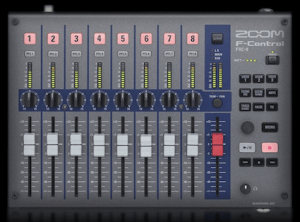![]() HandBrake has been a handy tool for media creators for over a decade. The free, open-source application makes it easy to convert and encode media of almost any format. HandBrake recently crossed an important milestone in its development, having finally reached an official version 1.0.0 release:
HandBrake has been a handy tool for media creators for over a decade. The free, open-source application makes it easy to convert and encode media of almost any format. HandBrake recently crossed an important milestone in its development, having finally reached an official version 1.0.0 release:
After more than 13 years of development, the HandBrake Team is delighted to present HandBrake 1.0.0. Thank you to all of our many contributors over the years for making HandBrake what it is today.
Here are some features included in HandBrake 1.0.0:
– New online documentation at https://handbrake.fr/docs
– Completely overhauled the official presets
– New general use presets for broad compatibility
– New device presets, now more up-to-date for common devices
– New web presets
– New Matroska (MKV) presets, including VP9 video with Opus audio
– Official presets from HandBrake 0.10.x are still available under “Legacy”
– New JSON-based preset system including command line support
– New JSON-based API for interacting with libhb
– Improvements to audio/video sync engine to better handle difficult sources
– Many miscellaneous bug fixes and improvements
– VP9 video encoding via libvpx
– Intel QuickSync Video H.265/HEVC encoder
– Requires Intel Skylake or newer CPU
– Ultra HD / 4K color pass through (support for BT.2020)
– Additional standard frame rate selections in the graphical interfaces
– New Auto anamorphic mode maximizes storage resolution, replaces Strict anamorphic mode
– New Pad filter (command line only for now)
– New Decomb/Deinterlace filter settings and improved defaults
– Rotate filter now available in all graphical interfaces
– New NLMeans filter tunes Tape and Sprite for analog tape recordings and vintage video games, respectively
– Assembly optimizations NLMeans filter improve performance up to 10%
– Assembly optimizations in x264 encoder improve performance for faster presets by 5-10%
– x265 encoder quality improvements, especially when using tune grain
– High bit depth encoding support via external shared libraries (video pipeline is still 8-bit 4:2:0)
– x264 10-bit
– x265 10-bit and 12-bit
To learn more about HandBrake 1.0.0, click the link at the top of this article. HandBrake is available as a free download for macOS, Windows, and Linux, as a well as a command-line version of the application.

 Nobody likes noisy audio tracks. They can be particularly problematic in spoken-word productions. And while it’s obvious that the best way to solve a noise problem is to cut it off at the source, that’s not always an option. Fortunately, there are a number of tools available to audio producers for reducing or (hopefully!) removing unwanted noise from recordings. But even with the variety of these denoising tools available today, there’s still plenty of room left for improvement.
Nobody likes noisy audio tracks. They can be particularly problematic in spoken-word productions. And while it’s obvious that the best way to solve a noise problem is to cut it off at the source, that’s not always an option. Fortunately, there are a number of tools available to audio producers for reducing or (hopefully!) removing unwanted noise from recordings. But even with the variety of these denoising tools available today, there’s still plenty of room left for improvement. Line 6 has been innovating the audio hardware and effects space for decades. The company made a big splash with the release of its latest flagship guitar effects processor, Helix, in 2015. And while the hardware version of Helix has proven to be very popular with musicians, Line 6 identified a need for Helix’s effects outside of an all-in-one piece of gear. That’s why Helix will
Line 6 has been innovating the audio hardware and effects space for decades. The company made a big splash with the release of its latest flagship guitar effects processor, Helix, in 2015. And while the hardware version of Helix has proven to be very popular with musicians, Line 6 identified a need for Helix’s effects outside of an all-in-one piece of gear. That’s why Helix will  The usefulness of modern digital audio workstations (DAWs) can be expanded greatly thru the use of plugins. Most DAWs come packed with more plugins than many audio producers are likely to ever use. Still, there’s a robust market of third-party developers creating many kinds of plugins, most of which are compatible with all of the major DAWs in use today.
The usefulness of modern digital audio workstations (DAWs) can be expanded greatly thru the use of plugins. Most DAWs come packed with more plugins than many audio producers are likely to ever use. Still, there’s a robust market of third-party developers creating many kinds of plugins, most of which are compatible with all of the major DAWs in use today. Zoom has been a leader in portable audio recording technology for over a decade. The company’s H series of recorders are particularly popular with podcasters and journalists. For remote productions that require more than what the H series can provide, Zoom has developed the F series, specifically the F8 and the F4. These devices provide a level of flexibility that can be extremely useful to those creating multitrack audio. Now, Zoom is taking its F series to a new level with the upcoming
Zoom has been a leader in portable audio recording technology for over a decade. The company’s H series of recorders are particularly popular with podcasters and journalists. For remote productions that require more than what the H series can provide, Zoom has developed the F series, specifically the F8 and the F4. These devices provide a level of flexibility that can be extremely useful to those creating multitrack audio. Now, Zoom is taking its F series to a new level with the upcoming  Musicians and audio producers are always looking for new ways to extend their sonic palettes. For years, creating new sound textures required racks full of hardware, or other effects processors that came in the forms of pedals or dedicated computer applications. But the mobile computing revolution that’s taken hold in recent years with the advent of smartphones and tablets has made it much easier to put powerful audio-processing applications in the palm of your hand. The latest example of this phenomenon comes courtesy of a new iOS app called
Musicians and audio producers are always looking for new ways to extend their sonic palettes. For years, creating new sound textures required racks full of hardware, or other effects processors that came in the forms of pedals or dedicated computer applications. But the mobile computing revolution that’s taken hold in recent years with the advent of smartphones and tablets has made it much easier to put powerful audio-processing applications in the palm of your hand. The latest example of this phenomenon comes courtesy of a new iOS app called  Popular video-streaming service Netflix made a significant change to how it works when it recently announced it’d allow users on mobile devices to download complete videos, instead of offering only streaming. It was a smart move on behalf of Netflix, as it gives mobile users the ability to download movies and TV shows on Wi-Fi and then consume those videos where they may have limited (or no) internet access.
Popular video-streaming service Netflix made a significant change to how it works when it recently announced it’d allow users on mobile devices to download complete videos, instead of offering only streaming. It was a smart move on behalf of Netflix, as it gives mobile users the ability to download movies and TV shows on Wi-Fi and then consume those videos where they may have limited (or no) internet access. Reason is a popular digital audio workstations used mostly by musicians. The software’s developer, Propellerhead, is offering
Reason is a popular digital audio workstations used mostly by musicians. The software’s developer, Propellerhead, is offering  Online video distribution service Vimeo has been working hard to build its reputation as “the world’s best creative community.” Vimeo launched when the internet video market began to take off during the previous decade. Realizing that the company would never be able to compete with YouTube on a macro level, Vimeo refocused itself as a purveyor of tools and services for independent video producers and filmmakers. Over time, Vimeo has introduced things like digital sales and subscription services that make it easy for producers to sell their videos online.
Online video distribution service Vimeo has been working hard to build its reputation as “the world’s best creative community.” Vimeo launched when the internet video market began to take off during the previous decade. Realizing that the company would never be able to compete with YouTube on a macro level, Vimeo refocused itself as a purveyor of tools and services for independent video producers and filmmakers. Over time, Vimeo has introduced things like digital sales and subscription services that make it easy for producers to sell their videos online.